Unprecedented load shedding has pushed angry consumers to the streets in Jammu and Srinagar forcing power managers to explore all options within their reach. As the crisis drags the energy deficit back to the centre stage in water-abundant Jammu and Kashmir, Masood Hussain traces issues and bottlenecks while deconstructing the ongoing crisis
In Jammu’s scorching heat, people lack the luxury of running a fan for more than half of the 24 hours. In Kashmir, residents grope in the dark when they get up during the wee hours for Sehri in Ramzan (concluded May 2, 2022), the Muslim month of fasting. Though the power utility is trying to keep the supplies to the hospitals uninterrupted, frequent grid tripping has pushed managers to unplug sensitive machines thus impacting patient care.
Jammu and Kashmir is passing through the worst power crisis at a time when better supplies were dominating the new Naya Kashmir narrative. “It looks so terrifying to explain this unprecedented crisis to our own families, not to talk of the society at large,” one senior engineer said, asserting that he has gone dumb on social media. “In this age when everything is linked to power, it is very difficult to make people believe in the factors behind the crisis.”
Unlike the periphery, urban Kashmir is suffering hugely because their lives are completely dependent on electricity – the lighting, water supply, cooling systems, and refrigeration. The two symbolic protests in Srinagar by women had focused on empty buckets and not lighting. Almost all political parties reacted to the unprecedented situation with former Chief Minister, Omar Abdullah seeing it Ramzan specific. “I was in Jammu and the supply will be snapped at Sehri and Iftaar and then I came to Srinagar, it is the same situation here.”
Homes apart, the hospitals and the industries have started having an impact.
Officials said the availability has sharply fallen as the demand surged by 16 per cent over last year. In Kashmir, the distribution company, Kashmir Power Distribution Company Pvt Ltd (KPDCL) said against the demand of 1600 MWs, they have been able to supply only 900-1100 MWs. Jammu is facing a shortage of almost half of the 1400-MW requirement.
A Sudden Crisis
Authorities in Delhi and Jammu attribute the crisis to a varied set of reasons. Apart from the surge in demand and early onset of summer – March and April have seen mercury soaring to a new high; they say the discharge in the rivers has fallen thus impacting the output of the hydropower stations. However, the major game-changer has been the fall in thermal energy generation.
India has a huge network of coal-fed thermal power stations in the coastal areas that consume imported coal. Off late, the coal costs have gone hugely up, probably because Europe has started procuring coal to manage its energy requirements. Europe has traditionally been sourcing its energy from Russia and in wake of the Ukraine invasion; the post-sanctions Moscow may not be as reliable as it traditionally was. As the costs spiralled up, the stations reduced imports and it impacted energy generation.
Efforts are underway to supply the coal mined within India but arranging rail transportation is a time-consuming and capital intensive affair. In certain cases, the process has started but it will take its own time for the thermal sector to switch over from imported coal to local coal.
All these tensions have phenomenally increased the electricity costs. “It reached Rs 22, a unit and then Central Electricity Regulatory Authority (CERC) had to intervene and cap it at Rs 12,” one Chief Engineer heading one power utility in Jammu and Kashmir said. “We are willing to pay Rs 8, a unit but it is not available,” added another Chief Engineer. Now it is difficult to even get it at Rs 12.
Generation versus Consumption
In water-abundant Jammu and Kashmir, the power crisis has invoked the very old debate that despite generating a lot of energy, the area is destined to stay in darkness. The fact is that Jammu and Kashmir’s overall generation is much below its requirements.
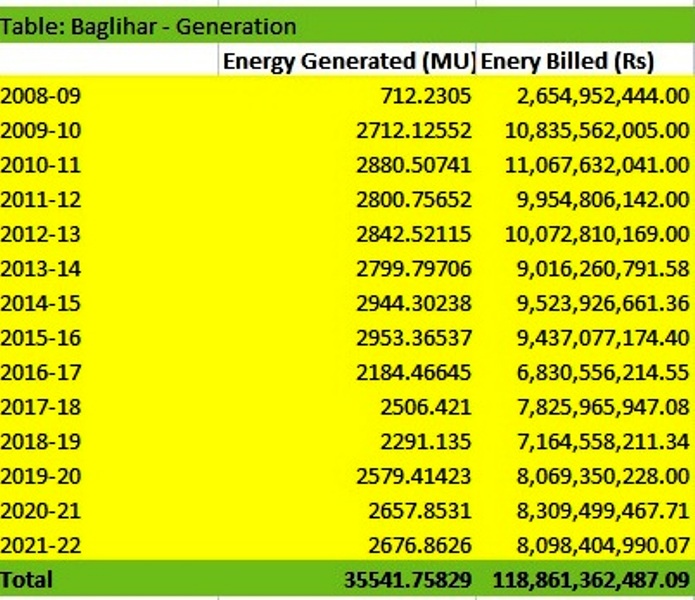
In 2020-21, Jammu and Kashmir consumed 18091.384 million units of energy even though the demand was much higher. The total power that was generated in Jammu and Kashmir was 16165 million units only. Of this, 3728.635 million units were generated by Jammu and Kashmir’s wholly-owned Power Development Corporation (including 2657 million units by 900-MW Baglihar) and 12437 million units by the NHPC run eight projects scattered across Jammu and Kashmir and Ladakh.
So the argument that Jammu and Kashmir generates more energy than it consumes is incorrect. However, the much bigger reality is that the power generated in Jammu and Kashmir is not entirely consumed within Jammu and Kashmir. Unlike central sector projects, Jammu and Kashmir consumes most of the energy that JKSPDC, its fully owned company, generates.

Wheeled Away
Former Chief Minister, Mehbooba Mufti recently alleged that electricity generated in Jammu and Kashmir is being supplied to most parts of the country to illuminate factories, industries and houses. “J&K had been pushed to see the worst in terms of power supply, particularly during Sehri and Iftar as there remains complete darkness; even people in Jammu are also suffering despite rising temperature there,” she said.
The statement is as much correct as it is incorrect.
NHPC, India’s hydropower giant, has six power stations in Jammu and Kashmir and Ladakh with an installed capacity of 2250 MWs. The host state gets 12 per cent of the generation free as royalty which is 270 MWs. In the rest of the energy that these projects generate, Jammu and Kashmir has minor entitlements. From Salal, Jammu and Kashmir has an allocated entitlement of only 22 per cent; it is only 21.96 per cent from Uri-I; only 8.33 per cent from Uri-II; only 9.15 per cent from Dul Hasti; only 7.17 per cent from Sewa-II and merely one per cent from Kishanganga project.
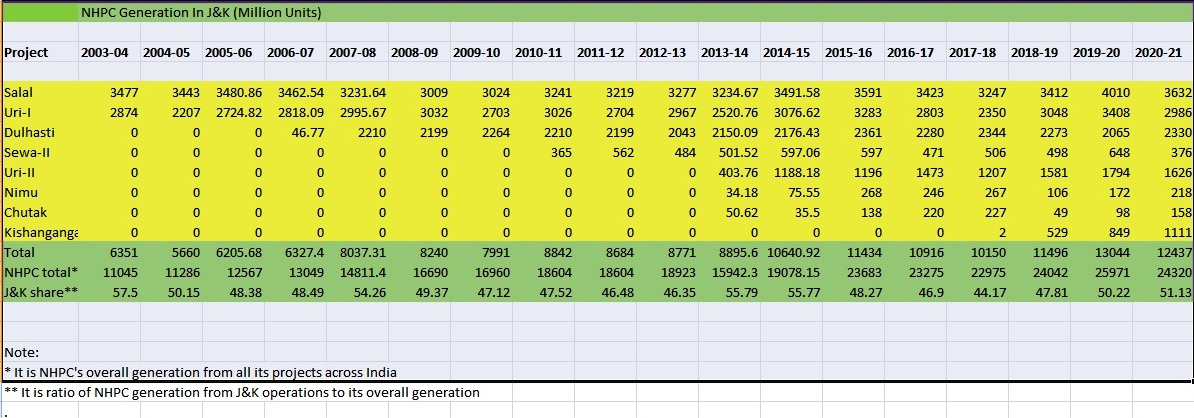
So from the six NHPC projects with 2250-MW installed capacity, Jammu and Kashmir has an allocated share of 714 MWs including 270 MWs of royalty, which comes to Jammu and Kashmir free of cost. Besides, it has an unallocated entitlement of 266 MWs, which mostly depends on the availability of power with the seller.
There are two important developments that take place months in anticipation of the setting up of a power station. Firstly, when it is being conceived, the promoters identify the beneficiary states. In quick follow up, the potential energy buyers sign a power purchase agreement (PPA) with the promoter on tariffs set by the CERC. These agreements are fundamental to the implementation of the power project because the banks fund the construction only after the project has listed buyers well before the work starts. No project can be implemented till it manages financial closure.
In the case of NHPC’s operations in Jammu and Kashmir, it is not clear where the problem lies. Why the host state has the least entitlements in power evacuation with Jammu and Kashmir? Have the successive government’s avoided signing PPAs with NHPC on the projects utilising the state water resource? For putting the records right, it would require some clarity by the people who have held the policy-making positions in successive governments.
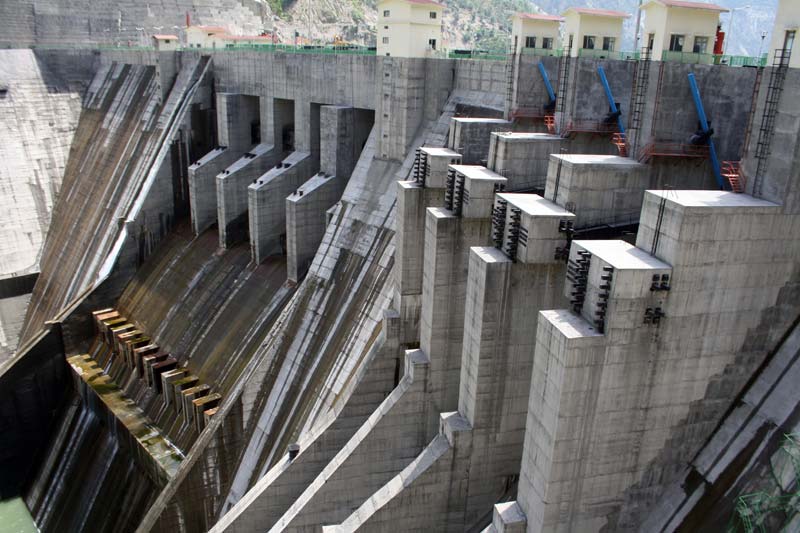
“The fact of the matter is that – right now – all Jhelum basin projects are running to the full capacity,” one senior engineer said. “While our (SPDC) projects are the real saving grace for us, all the power generated by NHPC is wheeled outside.” This is happening because Jammu and Kashmir has the least entitlement from these generations.
The issue was tackled for the first time when the Jammu and Kashmir signed an agreement with NHPC for creating the Joint Venture (JV), the Chenab Valley Power Projects Pvt Ltd. Interestingly it was done informally by like-minded people from the centre and the state governments. It helped manage this confusion. Royalty apart, the Jammu and Kashmir, under the agreement, can take its 49 per cent energy and will retain the “first right to refusal” over the rest of it. No such clause was there in any of the agreements that Jammu and Kashmir has signed with NHPC.
Only a few years back, there was a major shift in the energy sector when the power started being traded on the exchanges. As Jammu and Kashmir started buying energy at low costs from these exchanges, a huge section of the bureaucracy and policymakers started thinking against investment in power projects. That was the solar and wind energy impact. Why invest thousands of crores on projects having a decade-long gestation period when the power is available at half the costs right now – was the argument. But that was too recent. Has that argument prevented Jammu and Kashmir from securing its rights in the chain of projects that NHPC took in the post-2019 period is not immediately known?
Entitlements
In India’s energy eco-system, Jammu and Kashmir has its own entitlements in the central sector projects. In 42 projects with an installed capacity of 28127 MWs, Jammu and Kashmir has an entitlement to 2734 MWs (2713 MW allocated and 1021 MW unallocated). It includes the entitlements from NHPC operations in Jammu and Kashmir. In July 2013, the Prime Minister allocated 100-MW energy from 19 other projects. So the overall entitlement is 2834 MWs.
These entitlements, however, do not flow directly to the buyer grids. The buyer has to negotiate on price. Sometimes, the price is too huge. In certain cases, the states trade their entitlements to make money when they have surplus power.
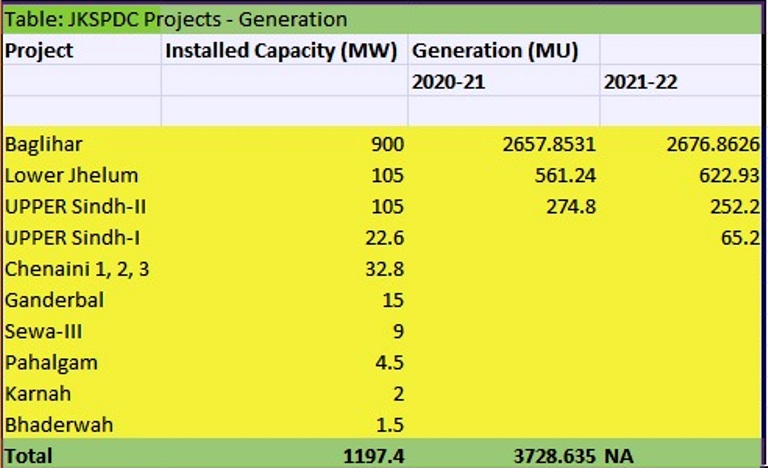
In all these projects, however, Jammu and Kashmir has had a huge question mark over its failure in securing its rights in the 600-MW Ranjit Sagar Dam project which technically is a joint project with Punjab. Despite losing a lot of area, resources, population and efforts, Jammu and Kashmir has not been able to even evacuate the first unit of energy so far. Even the water supplied to farmers through a canal requires frequent pleadings.
Energy Management
Against the requirement of 22628.88 million units’ of energy in 2020-21, Jammu and Kashmir could make available only 18091.384 million units. It purchased a whopping 14362.749 million units from the Northern Grid (from the entitlements it has).
The rest of the energy – 3728.635 million units – was managed from the JKSPDC owned projects. The Power Development Corporation projects are the real huge cushion that has been helping the power department to keep the show going. These 13 projects with an installed capacity of 1197 MWs are the major resource on which the energy sector is banking, even now.
In 2020-21, Baglihar – the only major project that Jammu and Kashmir owns, generated 2657 million units of energy. Lower Jhelum project generated 561.24 million units in 2020-21 and 622.93 million units in 2021-22. Upper Sindh-II generated 274.80 million units in 2020-21 and 255.20 million units in 2021-22. The first unit of Upper Sindh generated 65.2 million units.
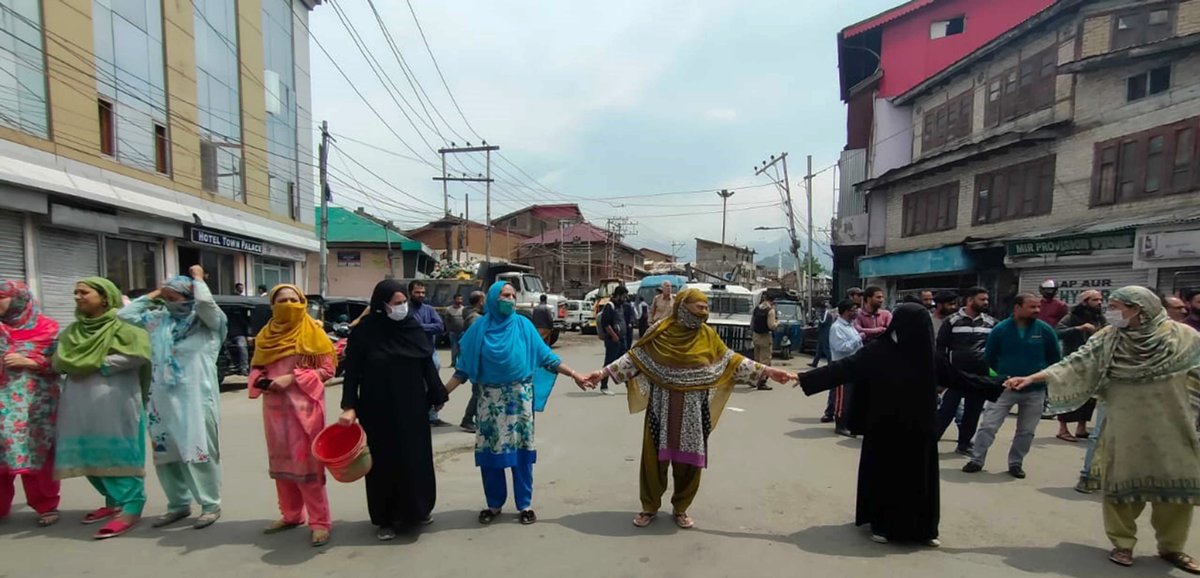
The Baglihar Story
Despite the fact that Jammu and Kashmir’s self-generation is helping the power department to tide over the crisis; the successive governments have failed in protecting these assets properly. The 900-MW Baglihar is the best instance of the lackadaisical attitude of the government’s lop-sided policymaking. Technically the JKSPDC is the only PSU of the Jammu and Kashmir government that is making impressive profits.
Right now, Baglihar-I is debt-free and Baglihar-II will take some more time to have this distinction. It is worth mentioning here that Baglihar-II does not operate for most of the year because of the non-availability of water in Chenab. During peak summers, however, when the discharge improves, it runs for three to four months.
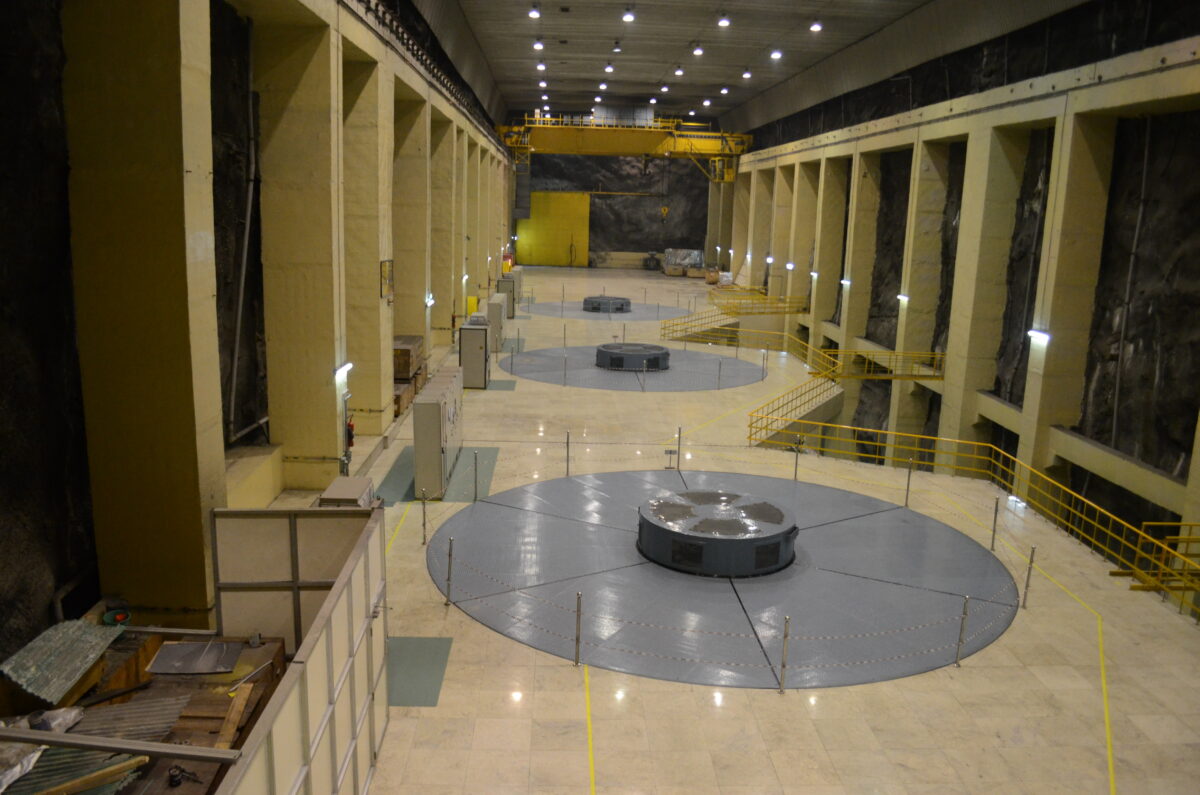
Ever since the project went into generation, it has been supplying its energy to the PDD. Never ever was it paid for the energy as a result of which it is yet to emerge as an autonomous PSU. The PSU had grand plans to get listed but it failed even manage its balance sheet properly. At one point in time, the authorities had decided that they will adjust the investment, which the state government had made in the project so that its balance sheet is strong enough but well before that could happen the last elected government collapsed under its own weight.
Baglihar is one of Jammu and Kashmir’s rarest success stories. Implemented in a hugely advise eco-system, it has generated 35541.76 million units of energy since October 2008 and so far recorded sales of energy worth Rs 11886.14 crore. Till June 2021, it has given energy worth Rs 6041 crore to Power Trading Corporation (PTC) to manage its debts. In the same period ending March 2022, Baglihar supplied energy worth Rs 55253.47 crore to Jammu and Kashmir’s PDD. What is interesting, however, is that the PDD is yet to pay the first penny to JKPDC.
After Baglihar’s power purchase agreement with PTC concluded in June 2021, it started supplying part of its energy to Haryana. In the last fiscal, it sold 876.03 million units of energy to Haryana and earned Rs 319.75 crore. What is interesting, is that Baglihar sells energy to Haryana and PTC at Rs 3.65 a unit but is charging only Rs 2.69 a unit from PDD. Still, PDD is not paying.
PDD’s failure in paying the JKSPDC the cost of the energy it consumes has posed a serious question mark over the viability of this company. It is unable to take independent decisions. Its profile is being undermined to offer an advantage to its competitors. A company that can implement Baglihar can implement any other project but policymakers are not offering it a level playing field.
Crisis Management
Senior managers in all the power-related corporations admit the unprecedented crisis. They attribute the crisis to the reasons outside Jammu and Kashmir. “Had there not been the month of fasting, we would manage it that it would hardly matter,” one engineer said. “But when the entire society requires energy at Sehri, we get exposed because we are unable to manage it.”
Insiders in the energy sector said they did not get any direction from the top about how to manage the issue. It was much later that we were permitted to acquire energy if it is costly. By then, however, there was no energy left to be purchased. “People pounce on whatever is available,” one engineer said. Now the Central Power Ministry has allocated 207 MWs of power to Jammu and Kashmir and the managers hope it must bring some improvement.
However, the “improvement” in availability at peak hours is because of PDD’s own cushion – the JKSPDC. “We have requested all our projects to go for peaking,” one insider said. Peaking is a process of collecting all the discharge of the water body for the entire day and putting on turbines at the full speed when the energy is required. It is a time tested jugaad that Kashmir engineers resort to during winters when the discharge in rivers is abysmally low. “This helped us manage the Sehri and Iftaar requirements but we are facing issues during the daytime when we require supplies but we do not have.”
For the time being, planners in the energy sector said they will have some kind of ease after Eid because it will reduce the peak demand during wee hours and the entire attention will shift to evenings. They say they do not see a major change in the energy availability in the coming days till the thermal sector goes back to its normal generation.
Post Script
The situation has dramatically improved after the Government of India allowed Jammu and Kashmir to take 200-MW of energy under a fresh allocation done at the Prime Minister level. “Right now, we do not have any cuts,” one senior engineer said. “The generation of our projects has improved after the discharge got better.”















